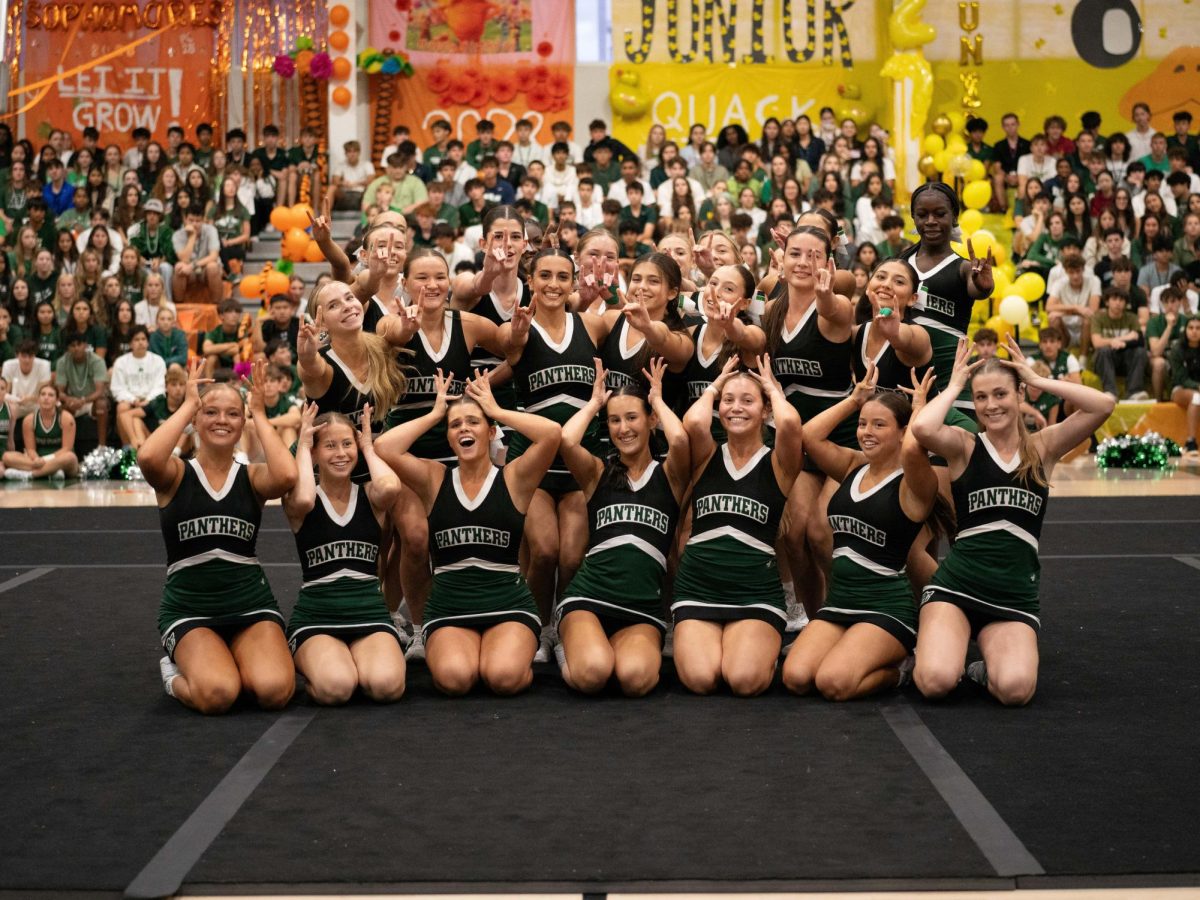[ot-caption title=” The cast of Defamation poses for a cast picture after their performance. (via, Jessi Gross, 11th Grade)”]
On January 26, the cast of Defamation came to Stacy Auditorium to perform their two-hour long interactive play. Students were encouraged to explore the biases that come with race, class, religion and gender through the play’s depiction of a civil court case on defamation. The interactive twist is that the audience gets to be the jury and decide which side wins. [spacer height=”10px” id=”2″]
The victim of the case is Mr. Golden, a very rich white Jewish man, whom Ms. Wade, a black graphic designer with recent financial troubles, is suing for defamation. Mr. Golden believes that Ms. Wade stole his watch, and Ms. Wade believes he told one of her biggest clients this story without factual evidence, which Ms. Wade believes as the reason for her losing the client and therefore her business. Both prosecutors brought their client and opponent’s race, religion, gender, socioeconomic status into the case, and students were encouraged to read between the lines and see how bias affected not only this case, but may also affect everyday cases with correlation to the judicial system. [spacer height=”20px”]
“This play gave us an opportunity to think about our own biases and perhaps open our minds to what that means about the way we perceive the world,” social studies teacher Mrs. Rashbaum said. “I spend a lot of time teaching about bias in both historical readings and currently in the media. The play was a forum to start discussion, and I hope it gives us as a community an opportunity to have conversations that open all our minds and allow us to be more understanding individuals and a community.”[spacer height=”20px”]
The play was very well received by the faculty and students, who all had a lot of questions and their own personal opinion about the case.[spacer height=”20px”]
“It was very interesting how topics raised in the play reflect issues in every life,” freshman Maya Beleznay said. “Overall, it was interesting, but it was a little bit long.” [spacer height=”20px”]
At the end of the assembly, the majority of the high school audience came to the decision of Golden winning the case. Most cited that there wasn’t sufficient evidence linking what Golden said to Wade’s business suffering a major downfall. [spacer height=”20px”]
After the play, audience members were invited to participate in an open, honest, meaningful discussion about race, class, religion, gender and the law. The discussion was a way for students to make their voice heard about many issues that they face as young adults today, and will probably face for years to come. While some people thought that the assembly’s length made it less effective, others appreciated the extra time that was built in for discussion. [spacer height=”20px”]
“I like how the play encouraged being interactive and sharing opinion,” freshman Bill Hung said. [spacer height=”20px”]
Many students were able to productively express how the play made them felt, and how it “hit home” for them. But perhaps the most popular question of all, still remains: what really happened to the watch?[spacer height=”20px”]
Sources:
































![Stranger Things 4: What to Expect [Warning: Contains Spoilers]](https://pcpawprint.com/wp-content/uploads/2021/11/StrangerThings4-900x473.jpeg)






















































